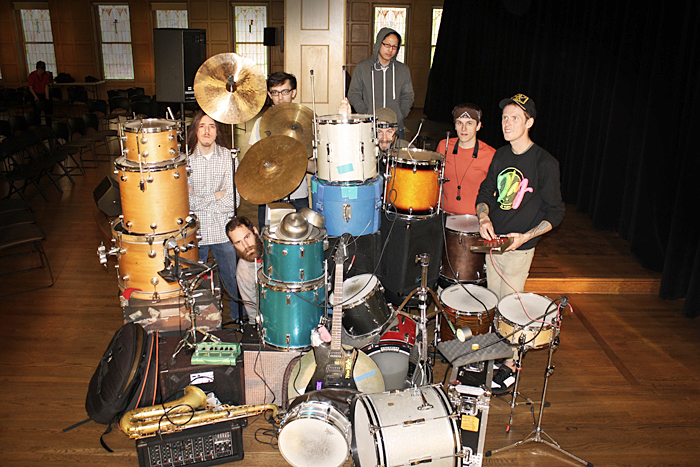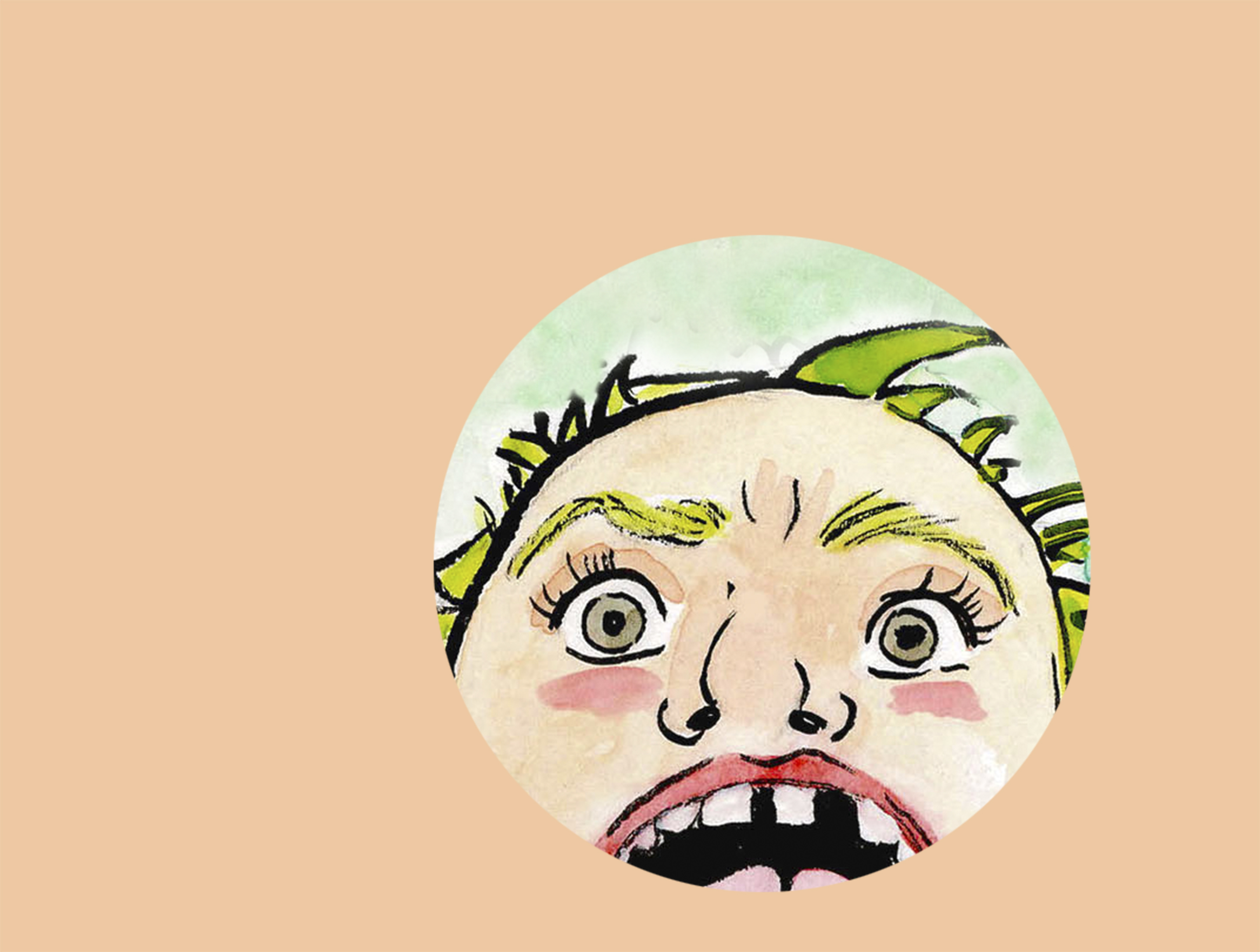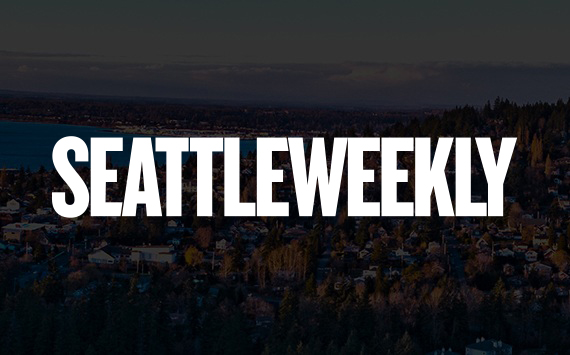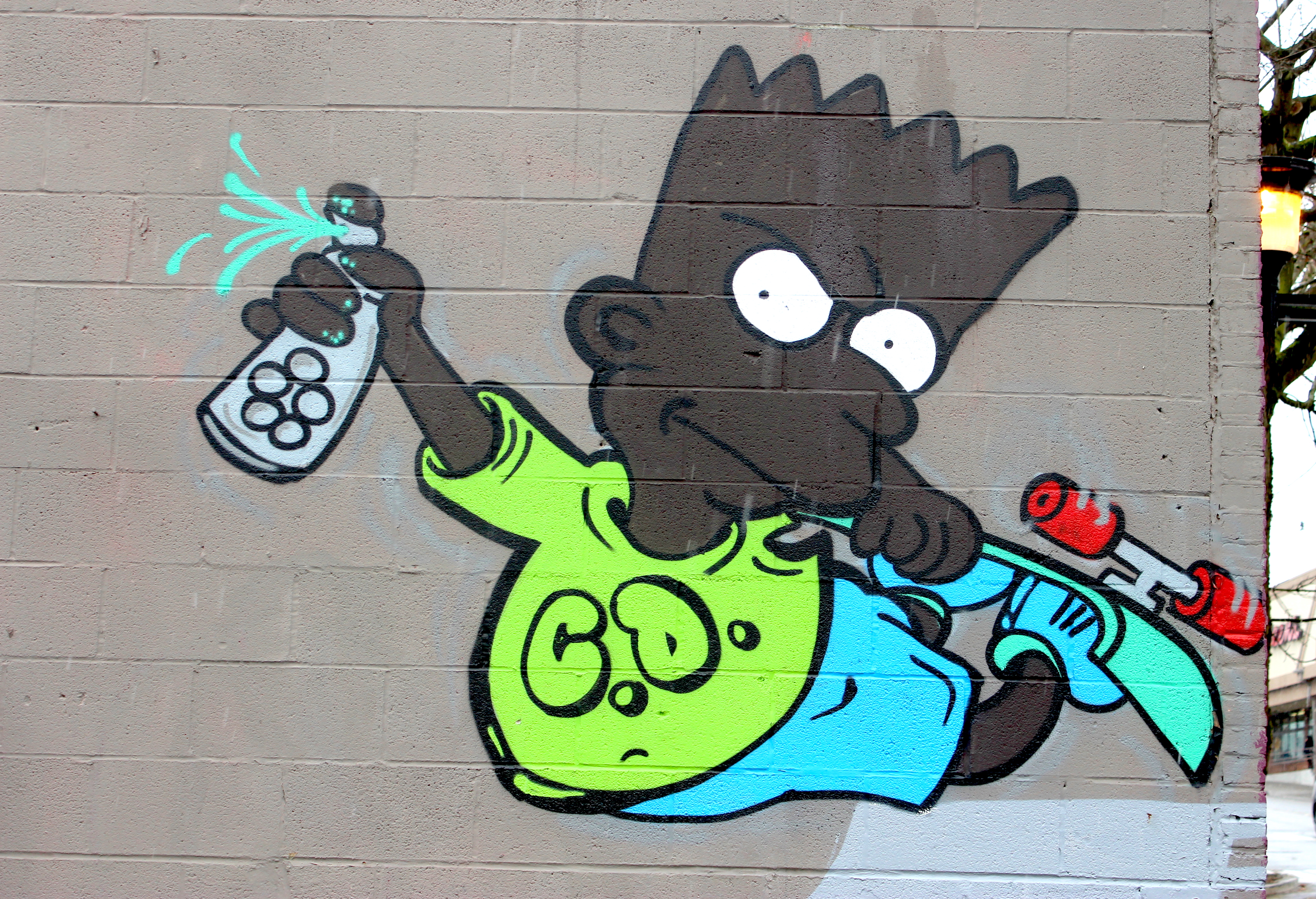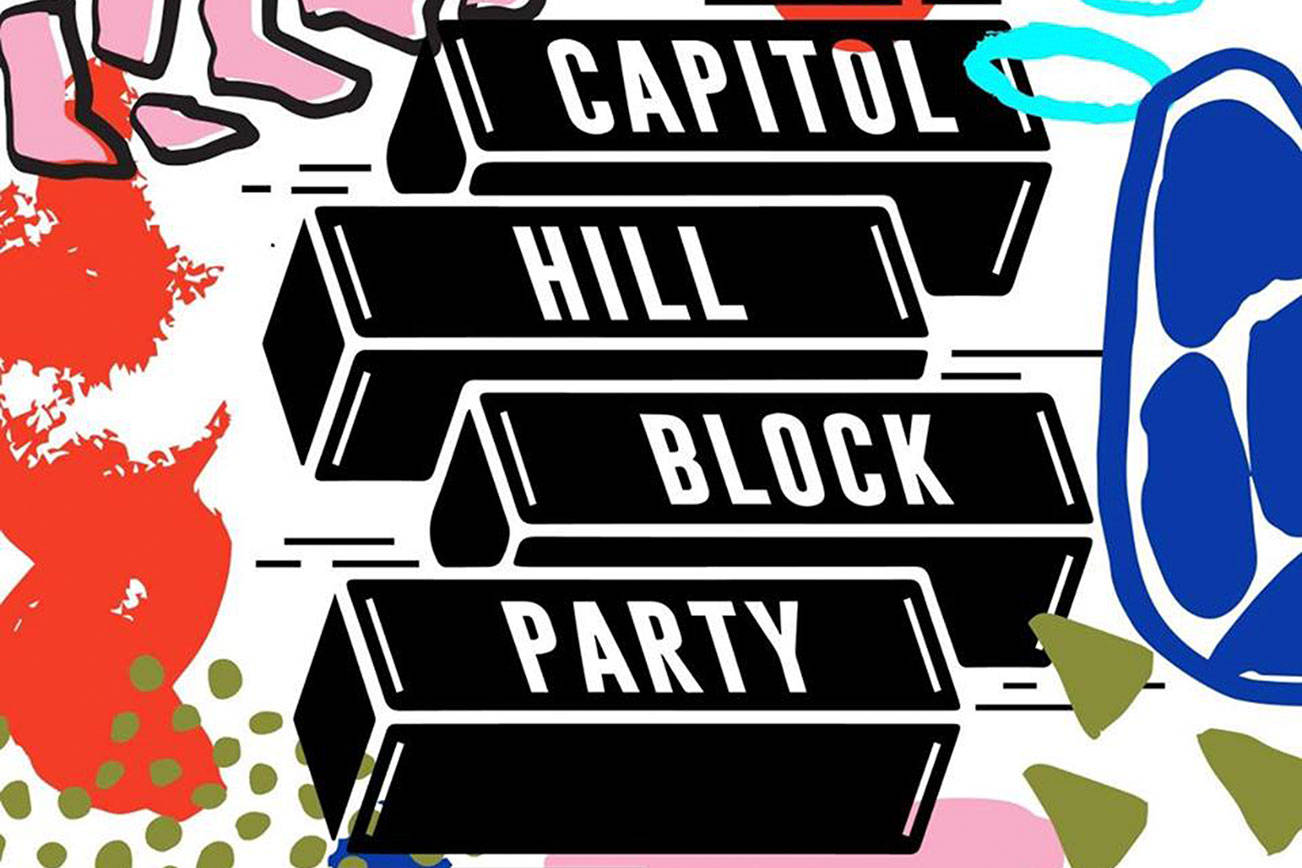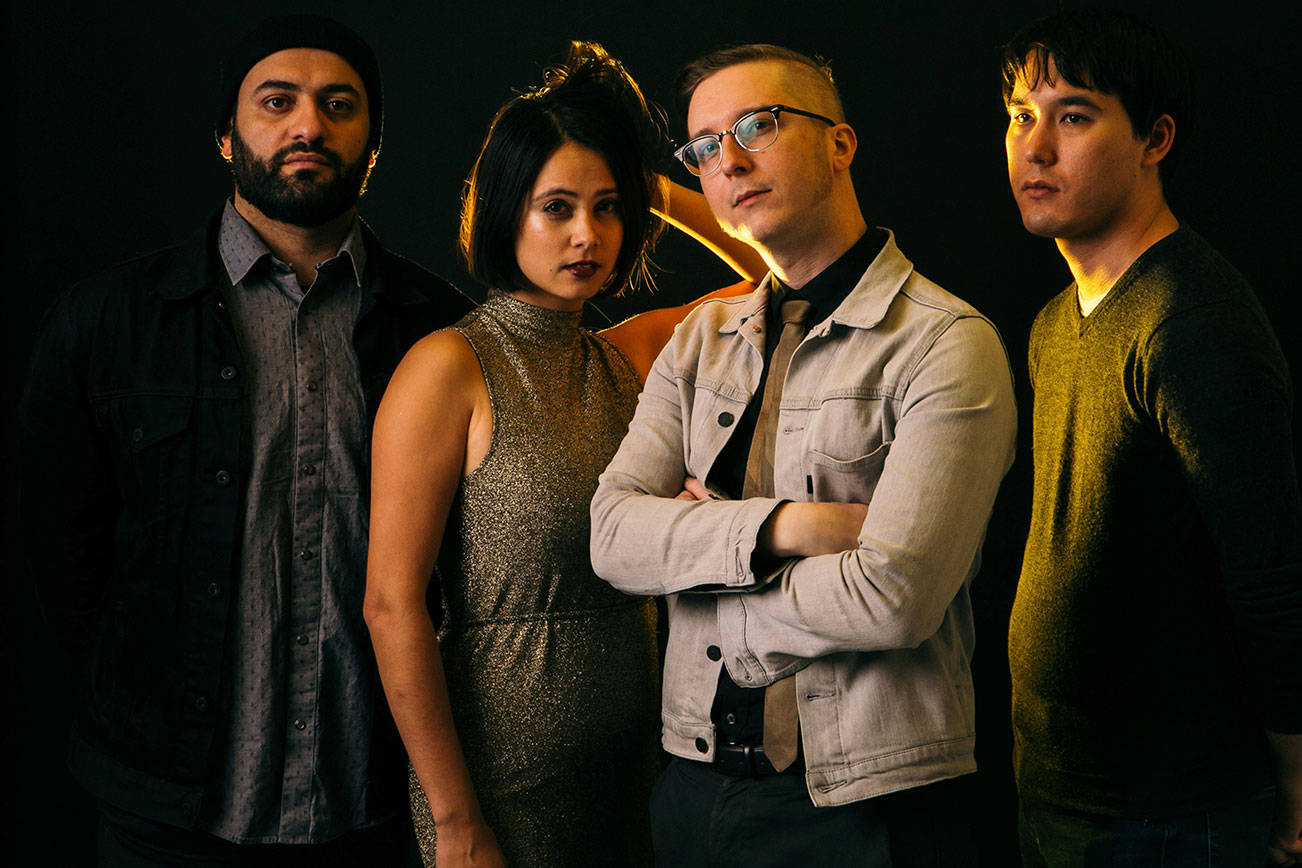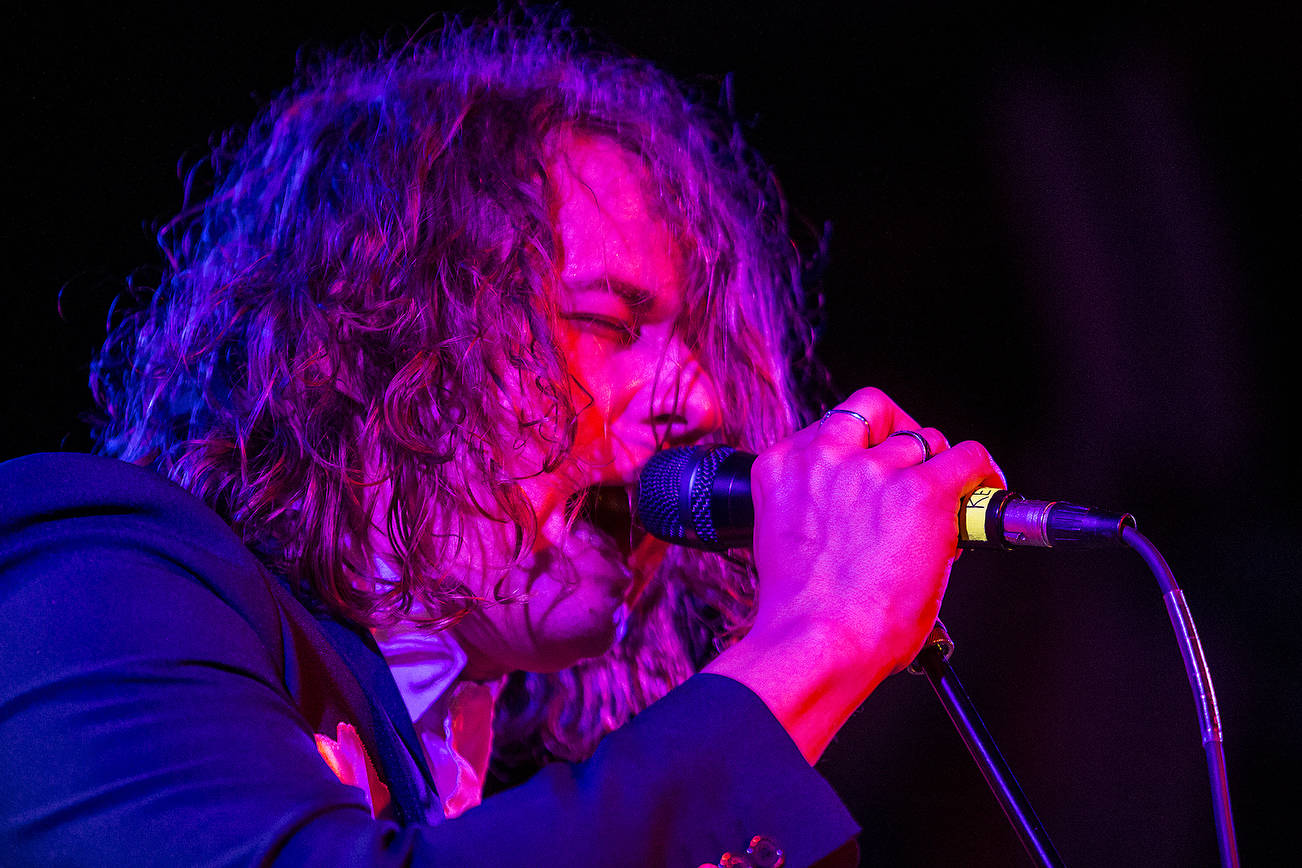Mix Haitian voodoo drum ceremonies with avant-garde jazz and you have King Tears Bat Trip. This Seattle-based band rocks four full drum kits, a saxophone, a guitar with all six strings tuned to G, and something called a “Chango” (more on that later). If that all sounds kind of nuts, that’s because it is.
The project was born out of the Racer Sessions, an improv series at Cafe Racer. UW jazz professor and KTBP guitarist Luke Bergman—whose other projects include Thousands, Heatwarmer, and Lonesome Shack—decided he wanted to write a composition that fused the Haitian drum rhythms he’d been digging with the on-the-fly structure of the Racer Sessions. The goal was to create something with a sort of hypnotic, vaguely spiritual effect.
It worked. King Tears Bat Trip’s self-titled album is an ecstatic clusterdrum explosion of rhythmic anarchy, consisting solely of two 18-minute tracks that sound like a specter soaring out of the underworld. Clangorous walls of percussion consume you as the guitar and saxophone wail triumphant, cacophonous melodies that often take sharp plunges into dissonant screeching. The songs can veer from celebratory to terrifying in the blink of an eye.
Furthering the madness is fellow UW alumni Brandon Lucia, a computer programmer who plays a self-created laptop instrument, the “Chango”: a program that reinterprets the patterns of light in video signals into fragmented audio drones. The resulting noise swirls atop the percussive madness, taking the band into one of its most volcanic, apocalyptic musical movements in the middle of “Elevenogram.”
While listening to the album is an experience in itself, there’s a compelling urgency to these sounds that require taking in a live show and witnessing the live, improvisational insanity of it all. You can listen to a wall of drums through headphones, but getting walloped by them in person is completely different.
Some of the fellows in King Tears Bat Trip also started an experimental-jazz label called Tables & Chairs. Tonight’s Tables & Chairs showcase, entitled “Apparitions,” collects some of the most free-form freaks in the Northwest, including Burn List, the Jacob Zimmerman & Gus Carns Duo, and Portland avant-ensemble Pinkish. With King Tears Bat Trip filling the bill, prepare for some delightfully cerebral sonic nuttiness. Columbia City Theater. 8 p.m. $10 adv./$12 DOS. 21 and over. KELTON SEARS Read on for our full interview with Luke Bergman.
I read somewhere that one of the initial inspirations for King Tears Bat Trip was Haitian voodoo drumming. What drew you to that sound and style initially? There were pretty much just three albums that I bought that were all put out on Soul Jazz Records and someone recommended them to me. I listened to them and they were super animated. One of the albums is just drums but really melodic, just super energetic. It really makes people want to dance.
Had you been interested in composing for drums before you listened to those records or were those albums what sparked your interest in making drum heavy music? I am in another band called Heatwarmer and sometimes I’ll write out drum beats that are along those lines. Most of the time though, I’ll just come up with a really general sketch of a tom melody with a snare drum pattern and then it’s improvised on top of that. The impetus I had that I offered to the group was just to have some general drum structure, and then focus a lot on pacing and how we reach peaks or the way that we unfold new ideas in the songs. That was the most challenging part about the music, communicating what I’m hearing with the pacing of it since these songs have really long-term development and don’t change in the pacing very much for these passages.
I saw on your Bandcamp that you called the music “spiritual” and “trance” like. When you’re talking about having these improv passages and you’re having to communicate with these guys wordlessly, does it feel like a trance or feel spiritual? I know for Haitian voodoo drummers it becomes a very spiritual experience. Yeah! But I try not to say our music is Haitian music. It’s not supposed to be the same religious liturgy as that stuff, I think it would be kind of profane to assume that our music accomplished the same thing. It’s definitely become our own thing the more we worked on it. It was inspired by those sounds, but it’s become more personal to us. I try to be careful not to reappropriate and say we can do the same thing.
Totally, I was just interested in what your personal idea of what the “trance” element means to your music. There is definitely a trance element to it. You can lose yourself in the rhythms, especially when it’s this solid beat that goes on forever, and you start to get the feeling that you don’t know how it’s going to end or where it began. The element of time dissolves a little bit. Hopefully, it’s this very evocative state you get into. We’ll play a song and it will last 45 minutes and we’ll have no conception of how long it went on for. It’s trance in how it has the ability to transport you outside of your conventional cognitive self.
I know you teach jazz at UW, and I was listening to a lot of the stuff you put out on Tables & Chairs, and I noticed that there’s a lot of similarity between this sort of trance element you are talking about and the avant-garde freeform jazz you’re releasing. Do you see an overlap between that drummy rhythmic trance and freeform jazz? Yeah, I’m not educated enough to speak to all of the places where jazz came from. But I know there was a lot of crossover. In the Caribbean there was a lot of this West African drumming influence and you can hear a lot of those things in jazz.
When I checked out Tables & Chairs I was surprised there was an avant jazz scene here. Is avant-garde jazz picking up elsewhere in the Northwest? That’s hard to say. Tables & Chairs kind of represents people my age who are into avant-garde free jazz stuff, and there’s all sorts of groups in town that are like minded. Tables & Chairs came from some people in my class in UW who were inspired by some of the older musicians in town that were playing free jazz. There were a couple of great sessions we had with them when we were younger that influenced us to start Racer Sessions that became kind of a large thing. Tables & Chairs came from wanting to create a more tangible presence for this stuff for the community. That specific scene is, I guess you could say “my generation” of free-jazz artists, who wanted to carve out a little niche for ourselves. I have noticed that there’s a lot more interest in that whole world of music recently and it’s growing a lot in Seattle and the Northwest.
It’s interesting how you blend all that jazz with what you do. It’s just not as straightforward, which I guess is a funny thing to say about avant-garde free form jazz. But for me, for someone who doesn’t come from the jazz world, I can listen to King Tears Bat Trip and really get into it. Do you see yourself as sort of a gateway to jazz for the “rock” world? Yeah! I spent most of my musical attention studying jazz and how it works and how to play it. But when it comes down to it, where I come from musically speaking, I started playing in rock and punk and hardcore bands in middle school and high school. That’s ingrained in how I listen to music and what I listen for in music. That and noise and pop. When it comes time to make my own music, even if my most rigorous studies have been in jazz, what I naturally gravitate towards is this hodge podge of stuff. I feel like a lot of people from Tables & Chairs probably feel the same way. The music ends up being a patchwork of a lot of different things.
